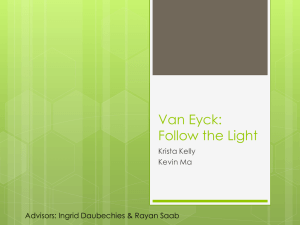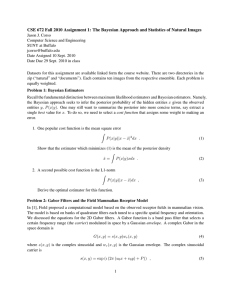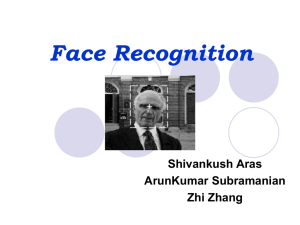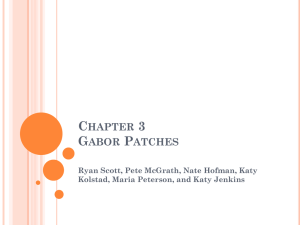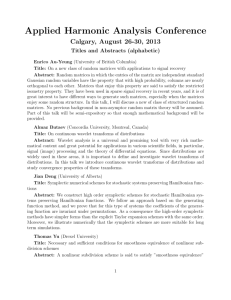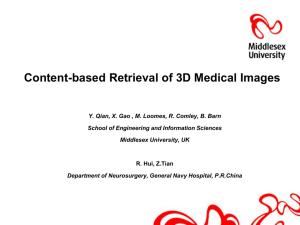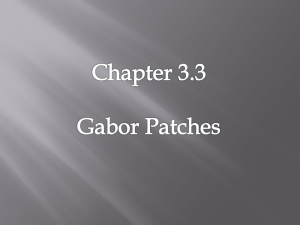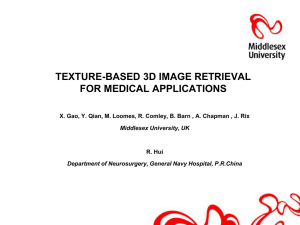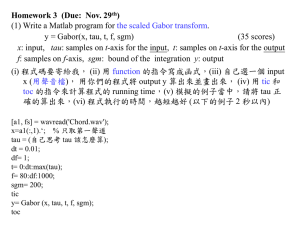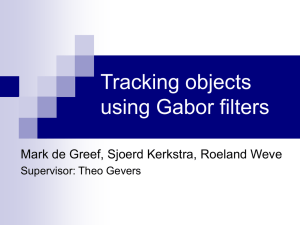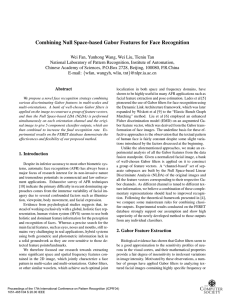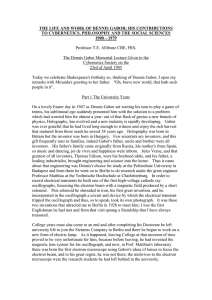Abstract - Best IEEE Projects
advertisement
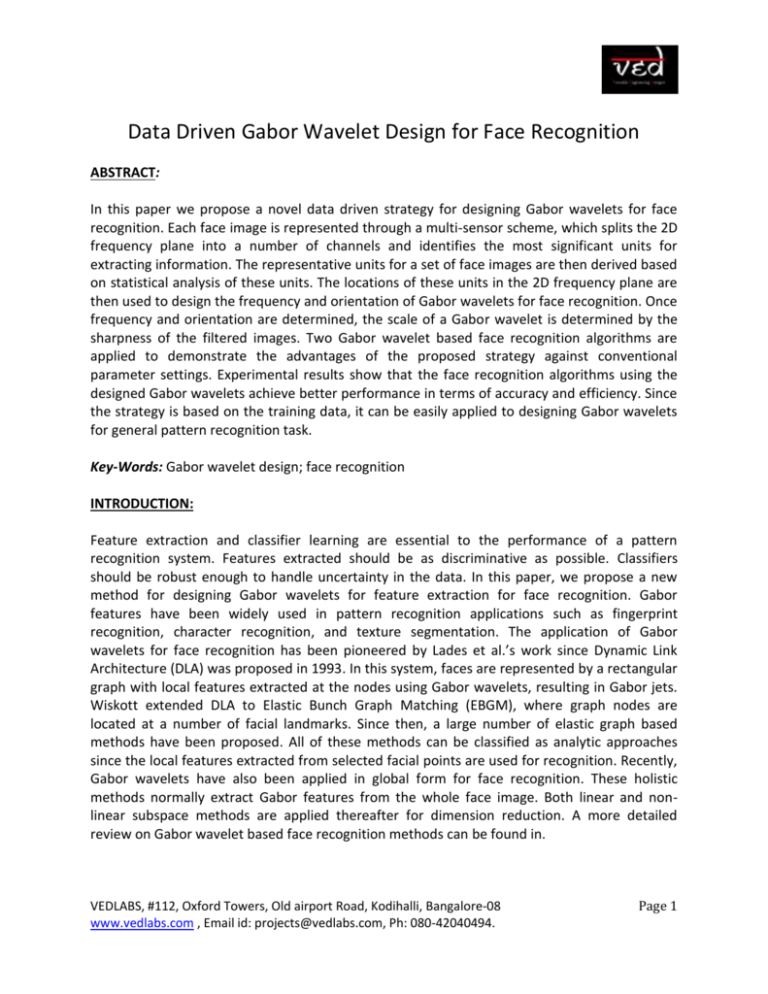
Data Driven Gabor Wavelet Design for Face Recognition ABSTRACT: In this paper we propose a novel data driven strategy for designing Gabor wavelets for face recognition. Each face image is represented through a multi-sensor scheme, which splits the 2D frequency plane into a number of channels and identifies the most significant units for extracting information. The representative units for a set of face images are then derived based on statistical analysis of these units. The locations of these units in the 2D frequency plane are then used to design the frequency and orientation of Gabor wavelets for face recognition. Once frequency and orientation are determined, the scale of a Gabor wavelet is determined by the sharpness of the filtered images. Two Gabor wavelet based face recognition algorithms are applied to demonstrate the advantages of the proposed strategy against conventional parameter settings. Experimental results show that the face recognition algorithms using the designed Gabor wavelets achieve better performance in terms of accuracy and efficiency. Since the strategy is based on the training data, it can be easily applied to designing Gabor wavelets for general pattern recognition task. Key-Words: Gabor wavelet design; face recognition INTRODUCTION: Feature extraction and classifier learning are essential to the performance of a pattern recognition system. Features extracted should be as discriminative as possible. Classifiers should be robust enough to handle uncertainty in the data. In this paper, we propose a new method for designing Gabor wavelets for feature extraction for face recognition. Gabor features have been widely used in pattern recognition applications such as fingerprint recognition, character recognition, and texture segmentation. The application of Gabor wavelets for face recognition has been pioneered by Lades et al.’s work since Dynamic Link Architecture (DLA) was proposed in 1993. In this system, faces are represented by a rectangular graph with local features extracted at the nodes using Gabor wavelets, resulting in Gabor jets. Wiskott extended DLA to Elastic Bunch Graph Matching (EBGM), where graph nodes are located at a number of facial landmarks. Since then, a large number of elastic graph based methods have been proposed. All of these methods can be classified as analytic approaches since the local features extracted from selected facial points are used for recognition. Recently, Gabor wavelets have also been applied in global form for face recognition. These holistic methods normally extract Gabor features from the whole face image. Both linear and nonlinear subspace methods are applied thereafter for dimension reduction. A more detailed review on Gabor wavelet based face recognition methods can be found in. VEDLABS, #112, Oxford Towers, Old airport Road, Kodihalli, Bangalore-08 www.vedlabs.com , Email id: projects@vedlabs.com, Ph: 080-42040494. Page 1 BLOCK DIAGRAM: HARDWARE AND SOFTWARE REQUIREMENTS: Software Requirement Specification: Operating System: Windows XP with SP2 Tool: MATLAB R2010, Version: 7.10.0 Hardware Requirement specification: Minimum Intel Pentium IV Processor Primary memory: 2 GB RAM, REFERENCES: [1] C. J. Lee and S. D. Wang, "Fingerprint feature extraction using Gabor filters," Electronics Letters, vol. 35, pp. 288-290, 1999. [2] X. Wang, X. Ding, and C. Liu, "Gabor filter-based feature extraction for character recognition," Pattern Recognition, vol. 38, pp. 369-379, 2005. [3] A. K. Jain and F. Farrokhnia, "Unsupervised texture segmentation using Gabor filters," Pattern Recognition, vol. 24, pp. 1167-1186, 1991. [4] T. P. Weldon, W. E. Higgins, and D. F. Dunn, "Efficient Gabor filter design for texture segmentation," Pattern Recognition, vol. 29, pp. 2005-2015, 1996. [5] M. Lades, J. C. Vorbruggen, J. Buhmann, J. Lange, C. Von der Malsburg, R. P. Wurtz, and W. Konen, "Distortion invariant object recognition in the Dynamic Link Architecture," IEEE Transactions on Computers, vol. 42, pp. 300-311, 1993. VEDLABS, #112, Oxford Towers, Old airport Road, Kodihalli, Bangalore-08 www.vedlabs.com , Email id: projects@vedlabs.com, Ph: 080-42040494. Page 2
